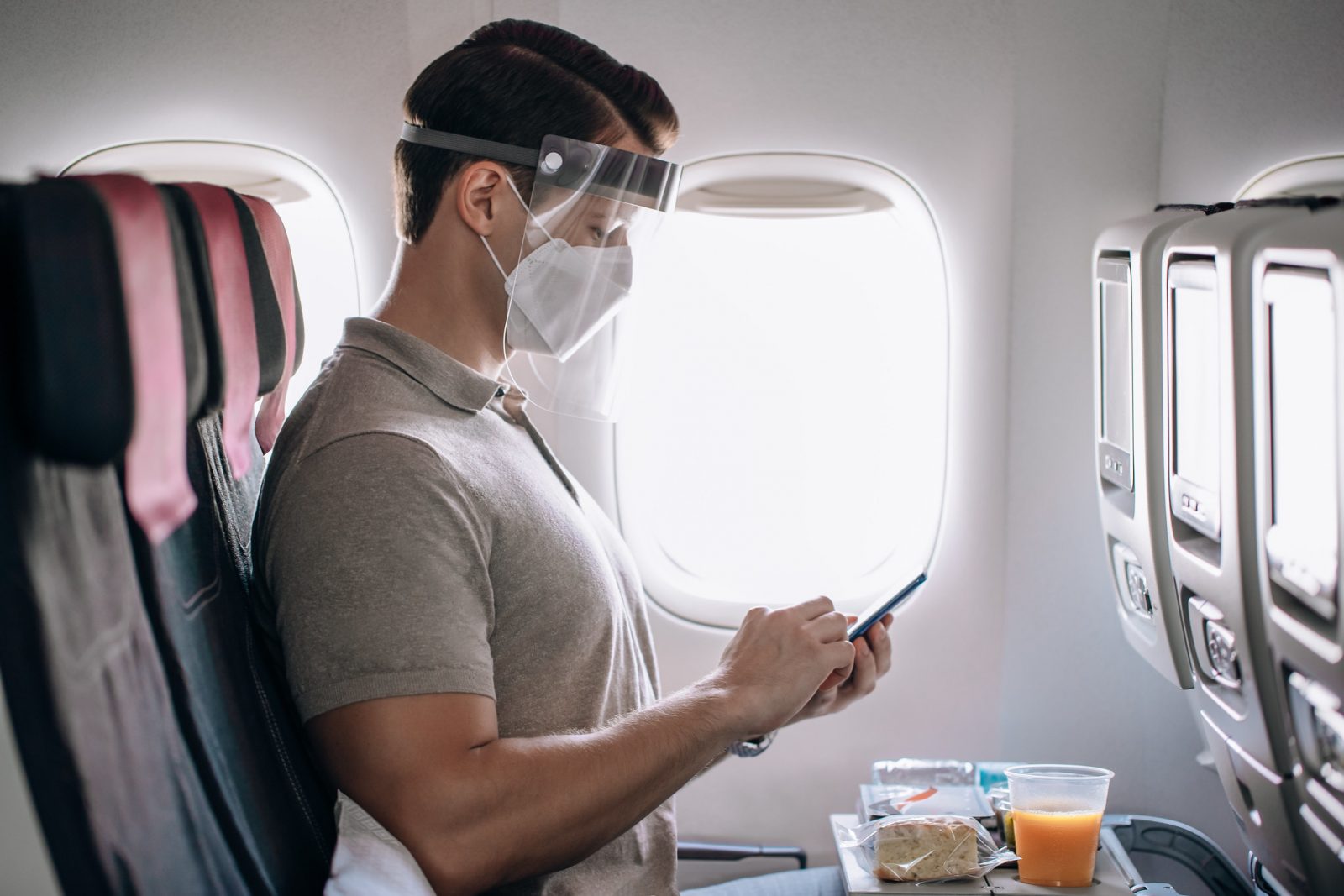
Remember at the start of the pandemic (which seems like such a long time ago now because it really is such a long time ago) when health officials and politicians first started urging us to wear face masks?
At that time, though, we were ordered to wear reusable cloth masks because the limited supply of disposable surgical masks and more protective medical-grade masks had to be saved for healthcare workers on the front line.
Even though reusable cloth masks hadn’t been tested for effectiveness, rather than providing much protection to the actual wearer they were mainly intended to protect others around us by capturing potentially infectious droplets inside the mask.
That thinking and messaging, which occurred so early on in the pandemic, has been ingrained in many of us and even though we’re now approaching the two-year mark of masking it’s been difficult to move on from.
High-quality single-use masks that actually provide the wearer with a good level of protection are now in plentiful supply but too many people still continue to wear poor-quality, single-layer cloth masks.
But with Omicron now becoming the dominant variant around the world, is it now time we finally upgraded our face masks? Omicron is said to be far more transmissible than previous iterations of the SARS-CoV-2 virus that causes COVID-19 and even if it turns out to less virulent, it could still result in a massive wave of hospitalizations.
Dr David Powell, medical advisor to the International Air Transport Association (IATA) believes Omicron could increase the risk of infection onboard a plane by as much as two to three times compared to other COVID-19 variants.
Thankfully, hospital-grade HEPA air filters and a fast air exchange rate still make plane cabins much safer than other busy indoor spaces according to Dr Powell but masks are still an important tool to protect yourself and others.
Dr Powell estimates that a standard surgical mask can increase protection by as much as 20 per cent but not all single-use masks are made equal. So what are your options? Here’s our rundown of the most commonly available masking choices out there…
- Surgical-style mask
-
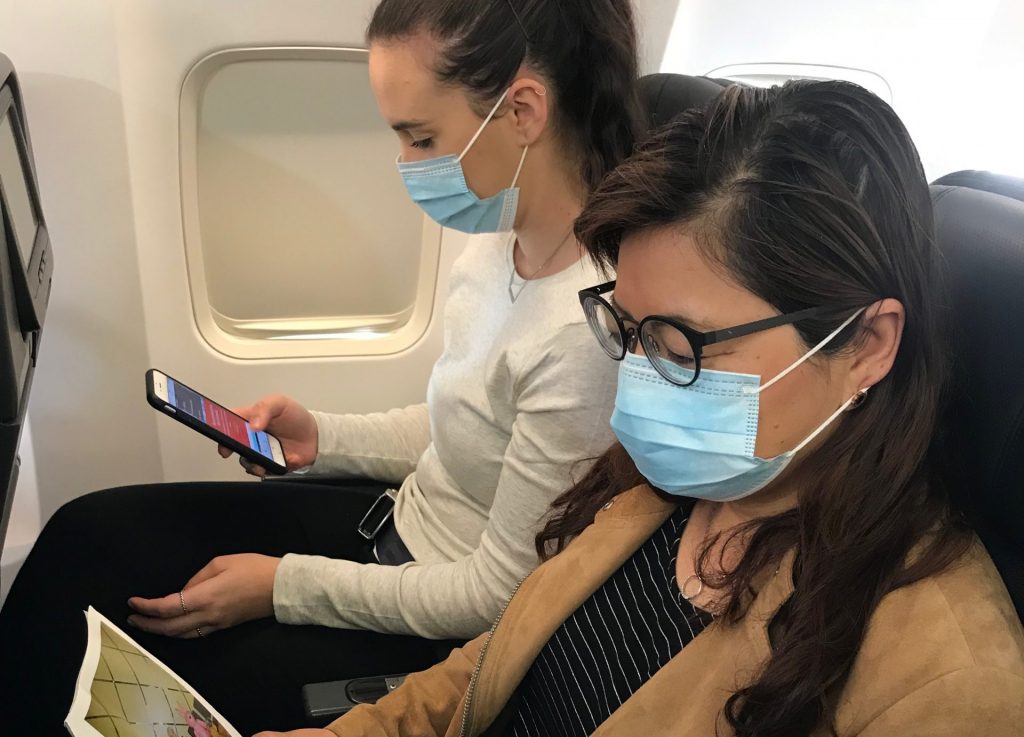
The simplest and probably the cheapest way to upgrade your mask is to buy a supply of surgical-style masks. The reason I say ‘style’ is because most aren’t sold as medical-grade masks but they do still confer much more protection than cloth masks.
The reason is that despite their flimsy-looking appearance, you should be looking to buy surgical masks that are made with at least three layers (3-ply) that work together to provide a decent amount of protection in otherwise low-risk environments.
To get the most of that protection, however, it’s important that you wear the mask the correct way around. Most masks have a coloured side, typically a shade of blue but sometimes light pink or yellow, which is the outer fluid-repellent layer that is worn facing out.
This layer resists droplets – and scientists believe most COVID-19 infections occur via droplet transmission. The soft inside layer is designed to capture and absorb moisture from your breath and thus provide protection to people around you.
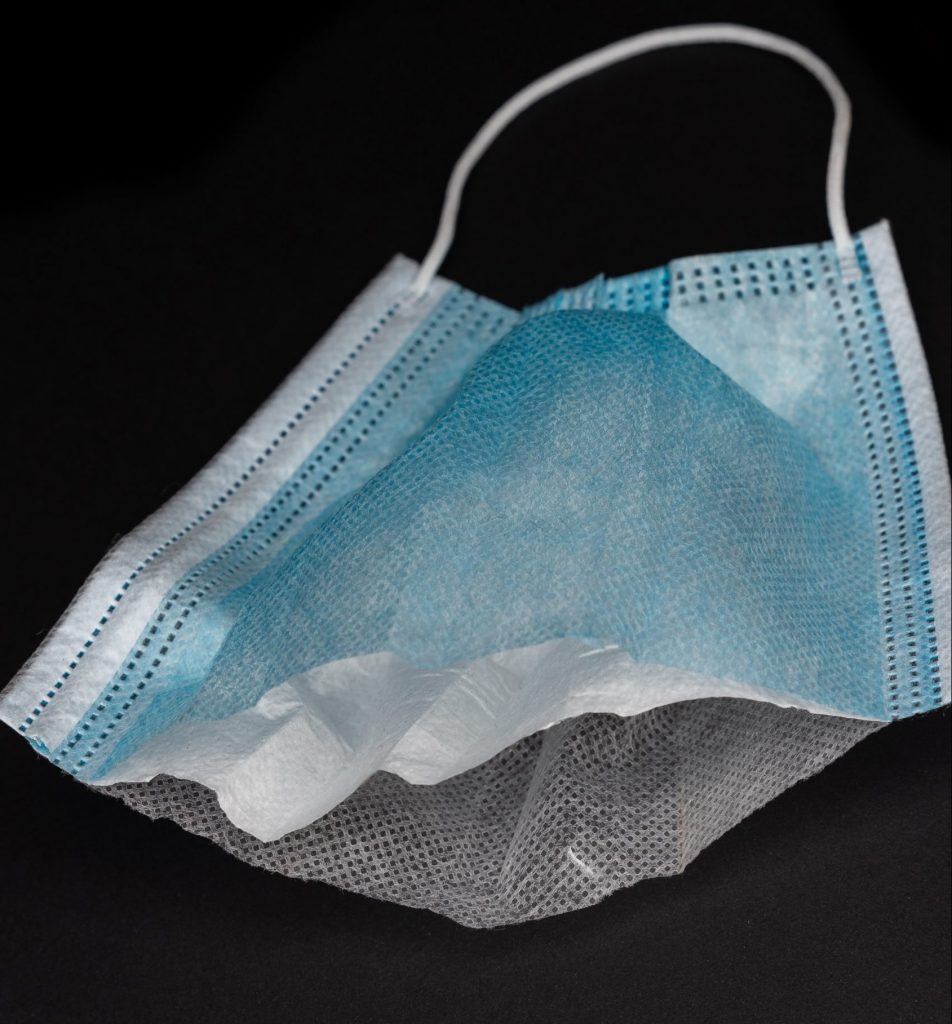
The middle layer acts as a filter, absorbing viruses and bacteria and stopping you from breathing them in.
If your mask doesn’t have a different colour on the outer layer, you can tell which way to wear your mask by having the soft side next to your skin and the tougher side facing out.
Remember to pinch the metal strip that runs along the top of the mask around your nose to achieve a snug and protective fit. Yes, the mask is worn over both your mouth and nose – especially if you are looking to protect yourself.
- Double masking
-
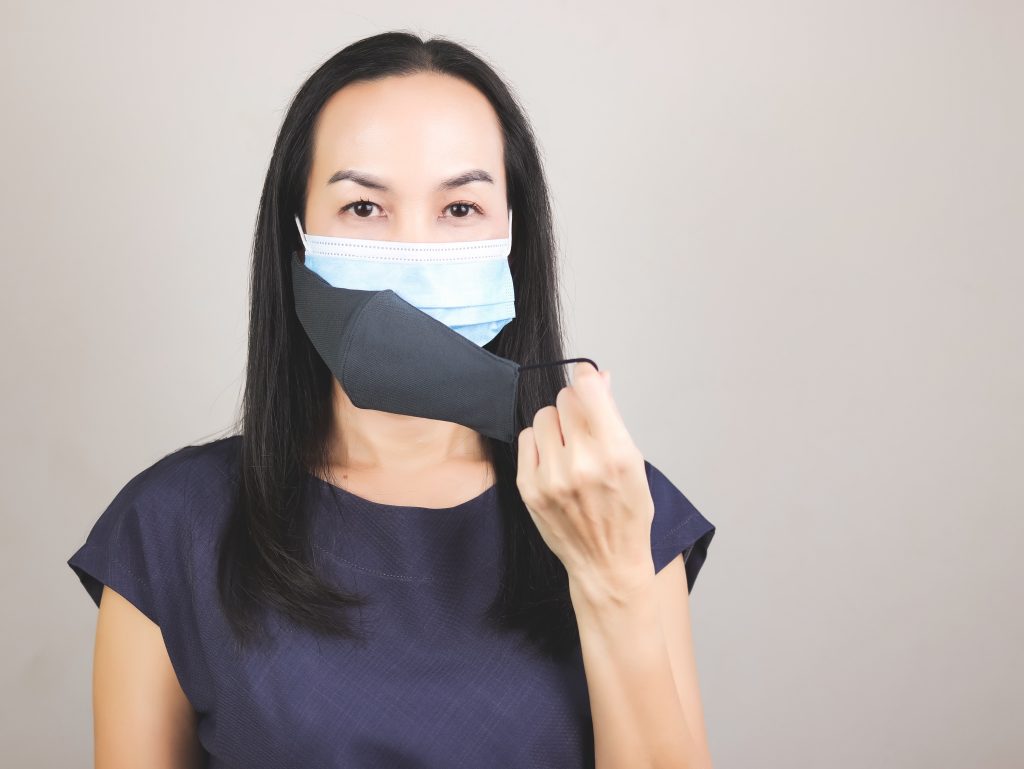
One of the biggest criticisms of standard surgical masks is that they often have a poor fit and can leave big gaps around the sides of the face, especially in smaller adults. That issue can be quickly resolved by double masking and it’s a recognised workaround that is recommended by the Centers for Disease Control and Prevention (CDC).
The point of double masking is not solely to add an additional layer of protection (although that’s a great added bonus) but rather to improve the fit of a surgical mask by pushing the sides snug with the side of the face.
The cloth mask, therefore, has to be large enough to push the edges of the surgical mask down against your face and, of course, be worn over the top of the surgical mask.
The surgical mask is doing most of the heavy lifting to protect you from viruses and bacteria in this scenario and there is nothing to be gained but a lot to lose by wearing the surgical mask on top of the cloth mask.
Don’t bother wearing two (or more) surgical masks at a time as this isn’t going to improve the level of protection or fit. There is also nothing to be gained by double masking when you are already wearing an N95 or equivalent mask (more on those shortly).
- KF94 Masks
-
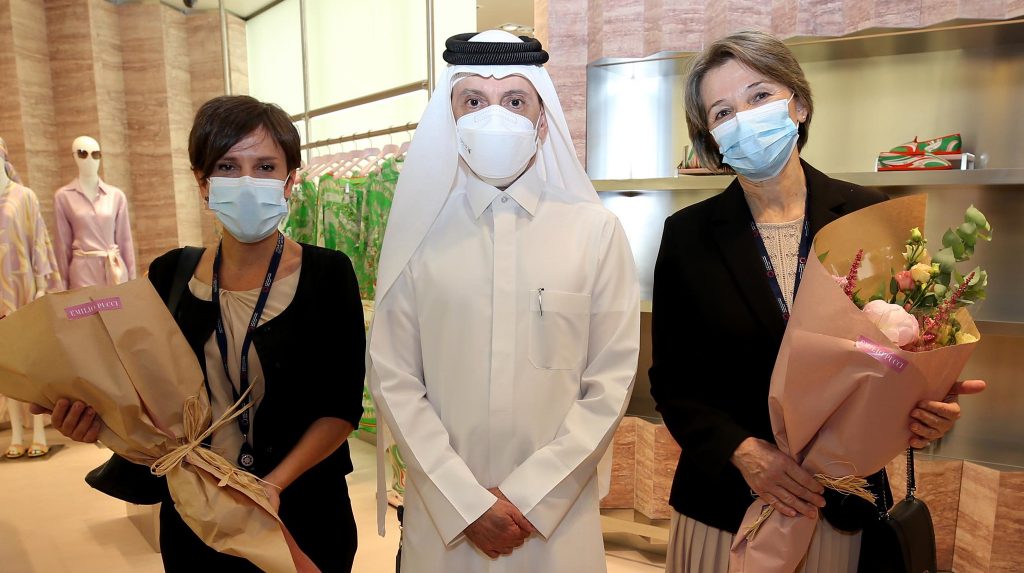
We are now going to look at some popular high-quality masks that are designed to provide the wearer with a considerable amount of protection. The problem with these masks, though, is that they are often known by letter and number codes that are frequently used interchangeably but wrongly.
The first is the KF94 mask (as modelled by Qatar Airways chief executive Akbar Al Baker in the photo above, as well as the model in the main featured photo at the top of the page). KF stands for Korean Filter and as the name suggests, the mask was designed in South Korea and it offers a filtration efficiency of 94%.
These are a pretty good choice for air travellers looking for some increased mask protection because they tick lots of boxes:
- They are readily available
- They are cheap
- They are comfortable to wear for long periods
- They provide a decent level of protection
The KF94 comes with standard ear loops so it’s comfortable and easy to put on and take off but the moulded design means it fits closer to the face than standard surgical masks.
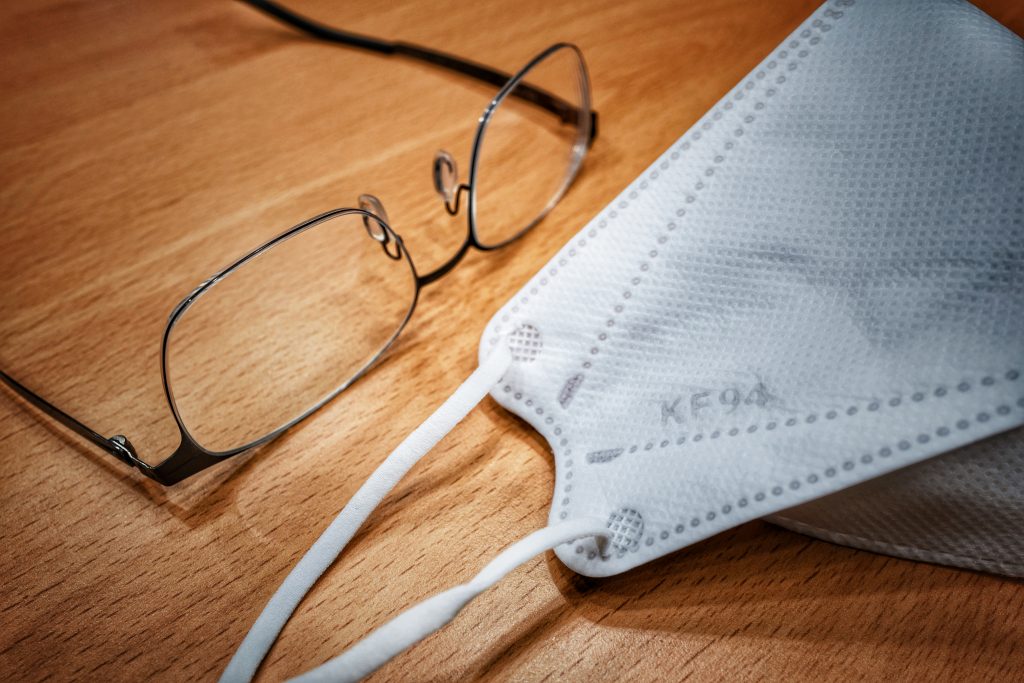
There are, however, some things to be aware of, not least the fact that not all KF94 masks are made equal and because they are mostly available on the internet, there are lots of fakes around as well. KF94’s have popped up everywhere and it’s sometimes difficult to confirm the authenticity of the certificate bearing the KF94 standard.
Thankfully, some suppliers of KF94’s are producing the mask locally in Europe and the United States which does at least make it easier to trace the origin of the mask and verify its quality before buying.
- FFP2 Masks
-
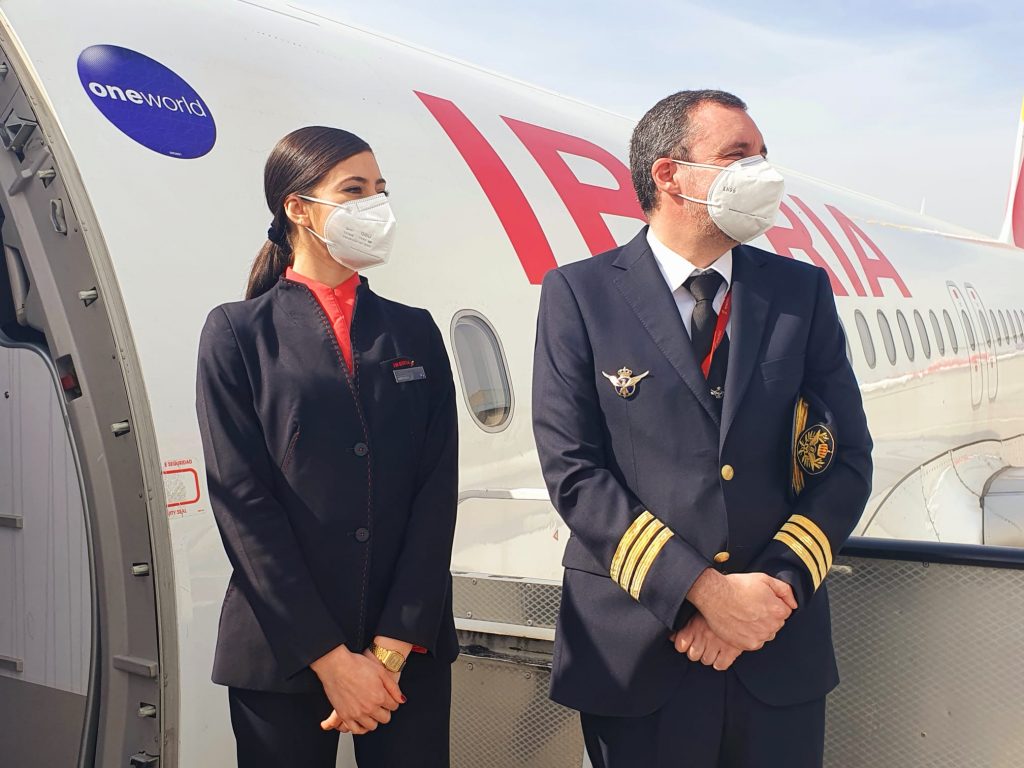
Next up is the FFP2 mask which has become a very popular mask for Europeans who are accustomed to wearing them for general day-to-day activities. FFP stands for Filtering Face Piece and in Europe, they are produced and certified under the official standard: EN 149.
There are several types of FFP mask that are approved in Europe but the FPP2 is the most popular because it features standard ear loops that make them comfortable and easy to wear. A properly fitted FFP2 mask is designed to provide a filtration level of 94%.
The medical-grade FFP3 mask, on the other hand, provides filtration capability of 99% but these use elastic bands that have to be worn around the back of the head for a much tighter fit.
In most cases, however, the FFP2 provides plenty enough protection. In fact, one recent study concluded that an FFP2 provides 75 times more protection than a tight-fitting standard surgical mask.
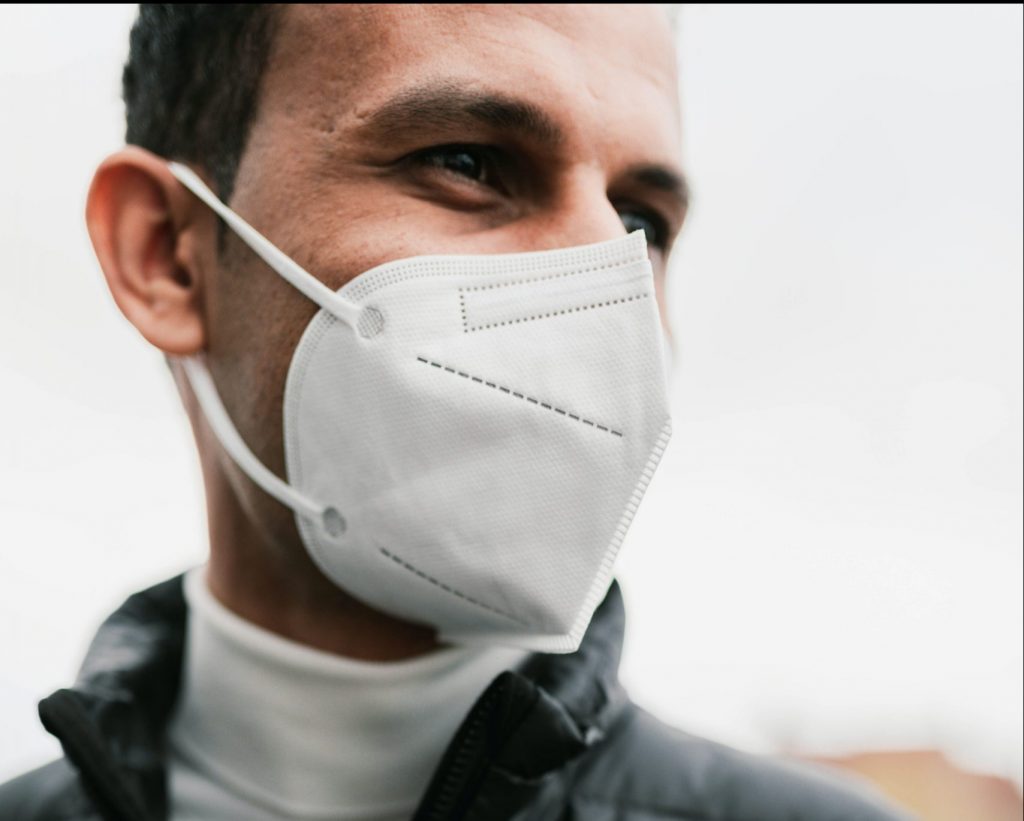
In certain parts of Germany and Austria, FFP2 masks are mandatory even for quick visits to the supermarket but be aware that there are lots of fakes available on the internet.
FFP2 masks are relatively comfortable but some people find it harder to breathe in them because of the thick material and multi-layer design. In recent months, the costs of FFP2 costs have dropped significantly in many countries.
- KN95 Masks
-
Outside of Europe, the standard design associated with an FFP2 mask is known as a KN95 mask. The is the Chinese standard associated with the design and, unfortunately, there are a lot of fakes around.
In Europe, look for a design that bears the CE certification mark as one method of proof that the mask conforms with EU standards. You may find that as part of the testing process, a mask has been certified as KN95, FFP2 and KN95 – This allows the manufacturer to sell the mask in different markets but if the mask meets the minimum design, quality and testing standards then this is allowed.
You will frequently see the two-letter acronym NR after FFP2 – This stands for non-reusable and this is the type you should be buying.
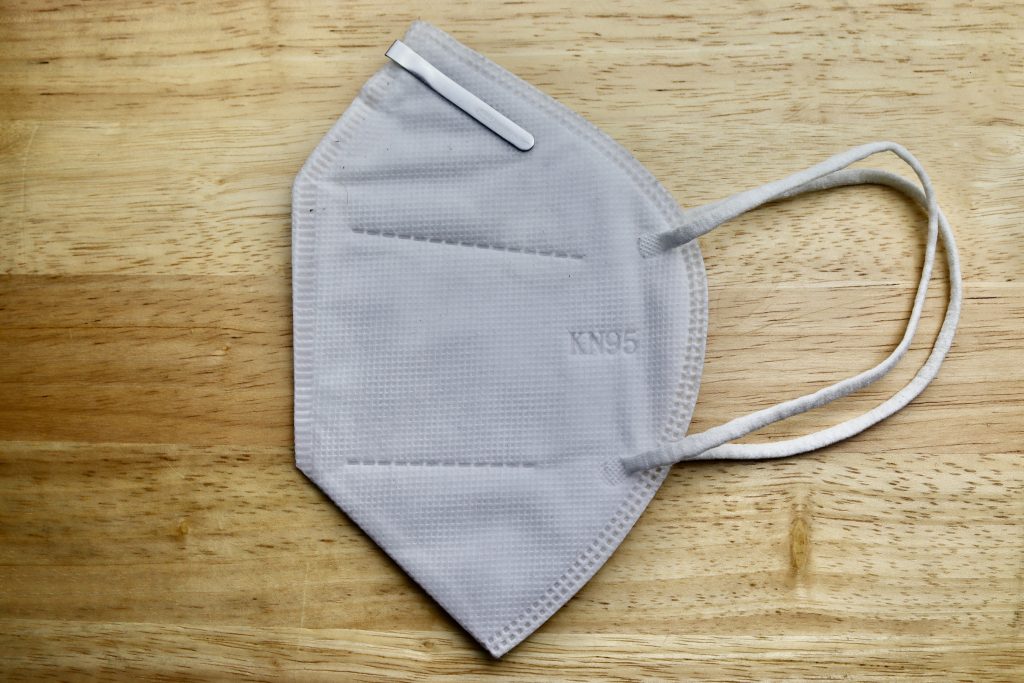
One study found that if both an infected and non-infected person wore a well fitted FFP2 mask, the maximum risk of infection after 20 minutes is hardly more than one per thousand, even at the shortest distance.
And this was the upper limit of infection risk. The study team concluded that the actual probability of infection in everyday scenarios was between 10 and 100 times smaller than the headline figure.
- N95 masks
-
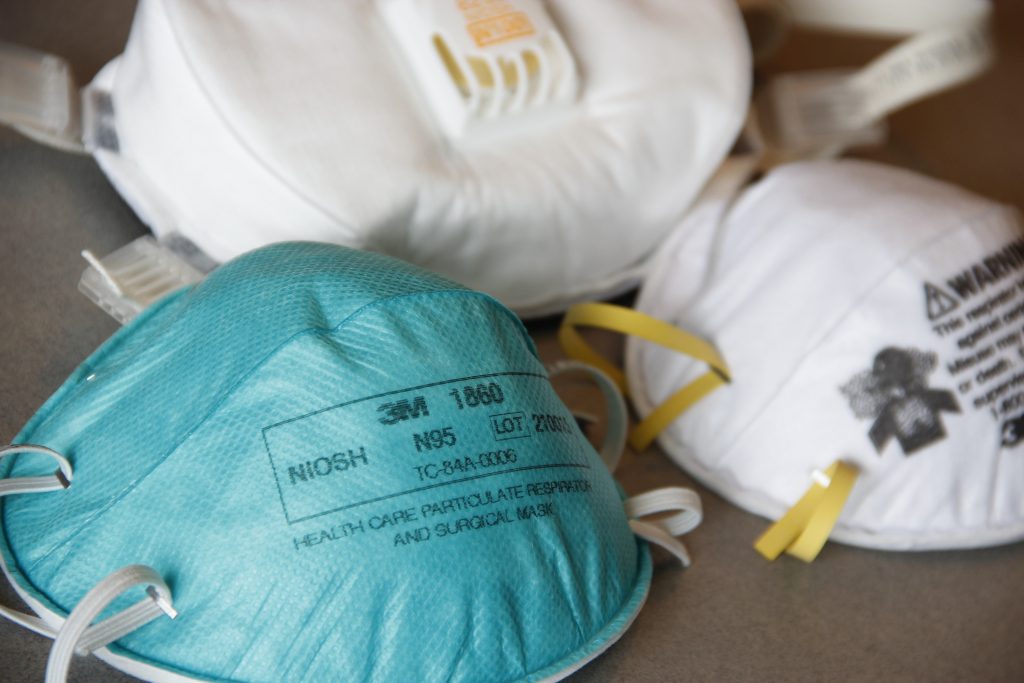
If you want really serious protection, then you might consider an N95 mask.
The name derives from the fact that they are certified by the CDC’s National Institute for Occupational Safety and Health or NIOSH for short. They are designed and certified to provide a filtration capability of 95%.
The N95 certification process is managed by NIOSH and there are literally hundreds of models of N95 mask officially approved and available on the market. N95 masks should ideally be fit tested but this process isn’t available for the average consumer.
It’s worth bearing in mind that while N95 masks are sometimes considered the gold standard in mask protection, there are limitations and issues that might not make them suited to the average traveller:
- Harder to find and less availability than other mask types
- Generally much more expensive but prices are falling
- Fitted with elastic bands around the back of the head
- Will be in high demand from healthcare workers
If you consider yourself particularly vulnerable or really can’t risk catching COVID-19 for whatever reason, then an N95 might seem like the logical choice. If your budget doesn’t stretch to splashing on N95’s, though, you can still achieve comparable levels of protection with a well fitted FFP2, KN95 or KF94.
The World Health Organization (WHO) suggests N95 and comparable masks are only required to be worn by healthcare workers when conducting aerosol-generating procedures on infected patients
Remember, all of these masks are designed for single-use and should be regularly changed with a fresh mask.
So yes, it’s time to ditch the fabric mask and upgrade to better protection. Just remember, your mask doesn’t have to break the bank.
Related
Mateusz Maszczynski honed his skills as an international flight attendant at the most prominent airline in the Middle East and has been flying ever since... most recently for a well known European airline. Matt is passionate about the aviation industry and has become an expert in passenger experience and human-centric stories. Always keeping an ear close to the ground, Matt's industry insights, analysis and news coverage is frequently relied upon by some of the biggest names in journalism.








It is time to get RID of these stupid things. Omicron will spread regardless and its time to move on with our lives.
Fully agree. Way past time, covid isn’t ever going away… I mean what will cnn do with all the graphics plastered over the TV 24 7..
If you really want to protect yourself you need N99 masks. Sorry, respirators we they are actually called. But for either N95 or N99 you need to undergo a fit test. Something you can also do yourself. Worth mentioning, you need to be clean shaved for them to work. Pouring it over your beard makes them useless and you can then wear any other mask rather than s respirator. N95 and N99 respirators are also available as a reusable respirator with interchangeable filters.
The common style it the half-piece respirator. To really be safe you need a full face respirator. Most people also call them gasmasks.
But remember, there won’t be any eating or drinking while onboard as this breaks your protection again.
Wasn’t it interesting in the beginning of the pandemic when governments told us that respirators don’t work but they are reserved for Frontline healthcare workers? I know they just wanted to make sure the general pubic doesn’t buy them up as they did with toilet paper but i think a honest approach is the better one.
Funnily enough, I did consider mentioning about N99 but I decided to stick to easy upgrade mask options for people who are still wearing cloth masks. In truth, an N99 or similar is totally unnecessary for the average traveller.
Omicron has killed the same number of people worldwide as Alec Baldwin’s gun. Stop feeding in to this foolishness. If you’re terrified….don’t fly. Or, wear a plastic bag over your head.
You mask cultists need to give it up. They don’t work. Covid spreading faster now than ever before. Your masks are a failure. Your vaccines are a failure. Your lockdowns are a failure. Let it go. Let the fear go snowflake. You will be fine. Omicron isn’t killing anyone. It’s time to celebrate the natural immunity which will soon arrive
The cynics and skeptics need to peddle their quackery to fellow denialists. I, who believes in science, am grateful for your effort in posting these details and have something useful to offer. I have a cloth mask which fits snugly over my nose and mouth and is woven with nano silver fibers. Nano silver is equally effective on all current and future variants of COVID-19. The virus dies on contact. Trilayered masks with nano silver are readily available via many eCommerce sites, including Amazon. I have used it for over a year, including at airports with horrible ventilation, and stayed safe.
But has your 5G signal improved since you’re been wearing that tinfoil hat?